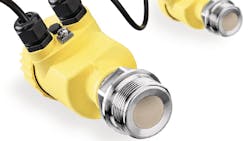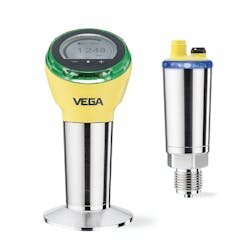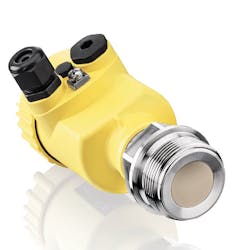Level indicators and pressure applications are crucial in ensuring efficient operations and safety. From basic visual indicators to advanced electronic transmitters, the range of technologies available is vast and constantly evolving.
Chemical Processing chatted with Jason Kuzmiak, Chemical Industry Manager at VEGA Americas, to delve into the world of level measurement and pressure instrumentation, exploring the various solutions, the challenges faced in implementation and the factors that drive customer choices. The following is an edited version of that conversation.
Q: Can you give an overview of level indicators and pressure applications within chemical facilities?
A: When it comes to the chemical industry, obviously, there are all different types of level indicators, from just straightforward visual indication all the way up to electronic transmitters. But you could have radar, guided wave radar, radiometric, nuclear solutions, ultrasonic and capacitance probes.
Q: Pressure measurement seems like an old-school technology. Why are customers not moving to a different solution.
A: The pressure part of the level measurement is essential for obstructions in a tank that we just can't avoid. So, something like a guided wave radar or a non-contact radar wouldn't exactly be a good solution. Or if the customer is looking to do a level measurement but doesn't have any additional process taps to install a guided wave or non-contact radar, sometimes they only have the taps on the sides of the vessel that are there to install a pressure instrument. And it doesn't become practical for them to add an additional tap onto any of their tanks because of hydrostatic needs, non-destructive testing that they need to do, or they simply just cannot take the vessel or the tank or the application out of service.
Sometimes it's simply that a customer is very familiar with pressure technology for measuring level, and they don't want to change. It comes back to the old adage that people trust what they like and what they know.
Q: Sticking with what they know and like is fine, but what if there is something different that they should be using?
A: When we talk with our customers, we offer them alternative solutions. For example, if a customer's been using a radiometric technology for years, a nuclear solution for level measurement, and they want to get away from that technology because of licensing issues or what have you, we will discuss alternatives available for them. And it may not even be a VEGA solution. We'll lead them down that path to provide a solution that is best for them.
Q: What are some of the needs within the chemical industry that you, as an advisor, have discovered?
A: It could be anything from a simple storage tank, whether it's static or differential pressure. It could be distillation columns; it could be flow applications like flare makeup gas applications, or any type of flow in the plant when it comes to air pressure or water pressure lines. Of course, we have solutions, our pro and our basic series of pressure instruments that basically will meet that need for either upgrading or for plant automation.
If a customer typically uses dial indicators, they go out and see a little needle on a dial, and it tells them what the pressure is. What we're doing is we're providing them with a solution. It's an electronic solution that eliminates the need for somebody to walk out and physically look at the application, and it sends a signal back to their control room or their DCS or whatever they're sending this back to. And it gives them a real-time indication of what their pressure application is in the plant.
You'll see a need for pressure throughout the plant. Even for something as simple as filter monitoring, we use differential pressure to measure the inlet and outlet of a filter between those two lines. This provides a clear indication of when that filter might start getting clogged up and gives them an idea of when they can actually plan an outage to clean that filter rather than an emergency outage.
These are just a few different types of applications. Basically, anything that requires either a level measurement, a pressure measurement or a flow measurement can be done with pressure instrumentation, and that's what we're here to provide to our customers.
Q: What are some of the challenges in terms of pressure instrumentation?
A: There are always challenges when it comes to any type of level instrumentation, but the pros outweigh the cons when it comes to any type of electronic instrumentation because, obviously, it's really hard to quantify your opportunity cost loss when you have to send somebody out into the plant and actually do a physical measurement verifying flow, verifying level.
I remember when I was younger working at a gas station. I used to have to walk out, unscrew the lids, and stick a wooded rod down into a gas tank to verify what was in there, which took time away from something else I could be doing. The same goes for the chemical industry.
So, you always want to look at what your opportunity costs are. But to give you a good example, most pressure applications have a metallic cell on the front of it that flexes back and forth. When the pressure increases or decreases, that indicator will then provide you with an indication of what that pressure is against that cell. But sometimes, especially in the chemical industry, you might get very sticky applications or products that, depending on if you have an upset in a plant or if something's going wrong, that sticky substance may tend to harden onto the surface of an instrument.
For example, a product like dextrose, when it gets above a certain concentration, it starts to harden on the surface. VEGA has metallic cells for high temperature and high pressure, but we also have a ceramic cell. And the benefits of the ceramic cell is the cleanability of it. So, if a product hardens onto the surface of the measuring cell, we can simply close off that line, pull the instrument out, take a wire brush, take a screwdriver, clean that ceramic surface off, and put it right back into service without damaging the cell or changing anything with the calibration of that instrument. And that is something that's unique that VEGA offers. With metallic cells, because a thin metal film across the front of it, you really have to take special care of that instrument when you're cleaning it out. Whereas with the ceramic version, you can be a little bit rougher and not be as concerned about how you're handling it.
Q: What else sets VEGA apart?
A: A lot of our competitors have similar products, and most of these companies would not be in business if they did not have a good product for the application. What it really comes down to is our service after the sale, our ability to talk with a customer and provide them with quick solutions.
We've got a 24-hour service line for any customers that have a need, and again, that's all a free service that we provide. But it really comes down to what we do once we make the sale. Because if we sell you something and it doesn't work, the odds of you calling us up again are very slim. And we want to make sure that once you get it in, that it works properly, it's doing the job that you want it to and that you have somebody to talk to that's available.
Everybody likes to say, "Oh yeah, of course we do that," but honestly, VEGA does it, and we really pride ourselves on it.
The second part of this is our delivery. Everything that we manufacture is out of Cincinnati, Ohio, so we've got our manufacturing plant that's domestic. And we're looking at very quick lead times. And I talk to customers all the time about, "Okay, for a guided wave radar or a non-contact radar, what is your normal delivery on something like that?" And I hear four weeks, I hear six weeks, I hear eight weeks. And when I tell them that, from the time that they place an order for a majority of our products, it's shipping out the door in four to five days.
Q: What's one of the most memorable projects you've worked on?
A: It's interesting to see how things are made from start to finish. While this is a little bit out of the chemical industry, watching a bag of potato chips being made—from the time that the potato rolls off the back of the truck to looking at all the types of applications that are done throughout the process of getting the potato into the bag—is kind of interesting to me.
One of the other ones that I enjoyed was seeing how a kayak is made. Obviously, kayaks are made from polyethylene pellets, which they melt down. Then, they extrude them, add colors to them, and blow mold them. It’s interesting to see how they are made all the way down to watching them roll off the product line. They make one kayak about every 15 minutes. It's amazing how that happens.
I have the advantage of being able to see things from start to finish, whether it's pellets being made in a petrochemical plant or an actual end user using those pellets to melt them down and make kayaks, bottles or anything else from the plastics industry. So, those are kind of interesting for me.
Q: Does being able to witness these things help you better serve the client?
A: Of course. The customer says I'm doing storage of pellets, and that's great. But then, when you have that conversation with the customers, and you learn that they're having other issues that they might not necessarily know if there's a technology to help them alleviate their problems. And that's one of the things that, as an industry manager, I'm going out, and I'm helping our salespeople to identify different opportunities within a plant, whether it's with the customer or the salesperson, to know where we might have a solution for them.
For more information, visit: https://www.vega.com/



